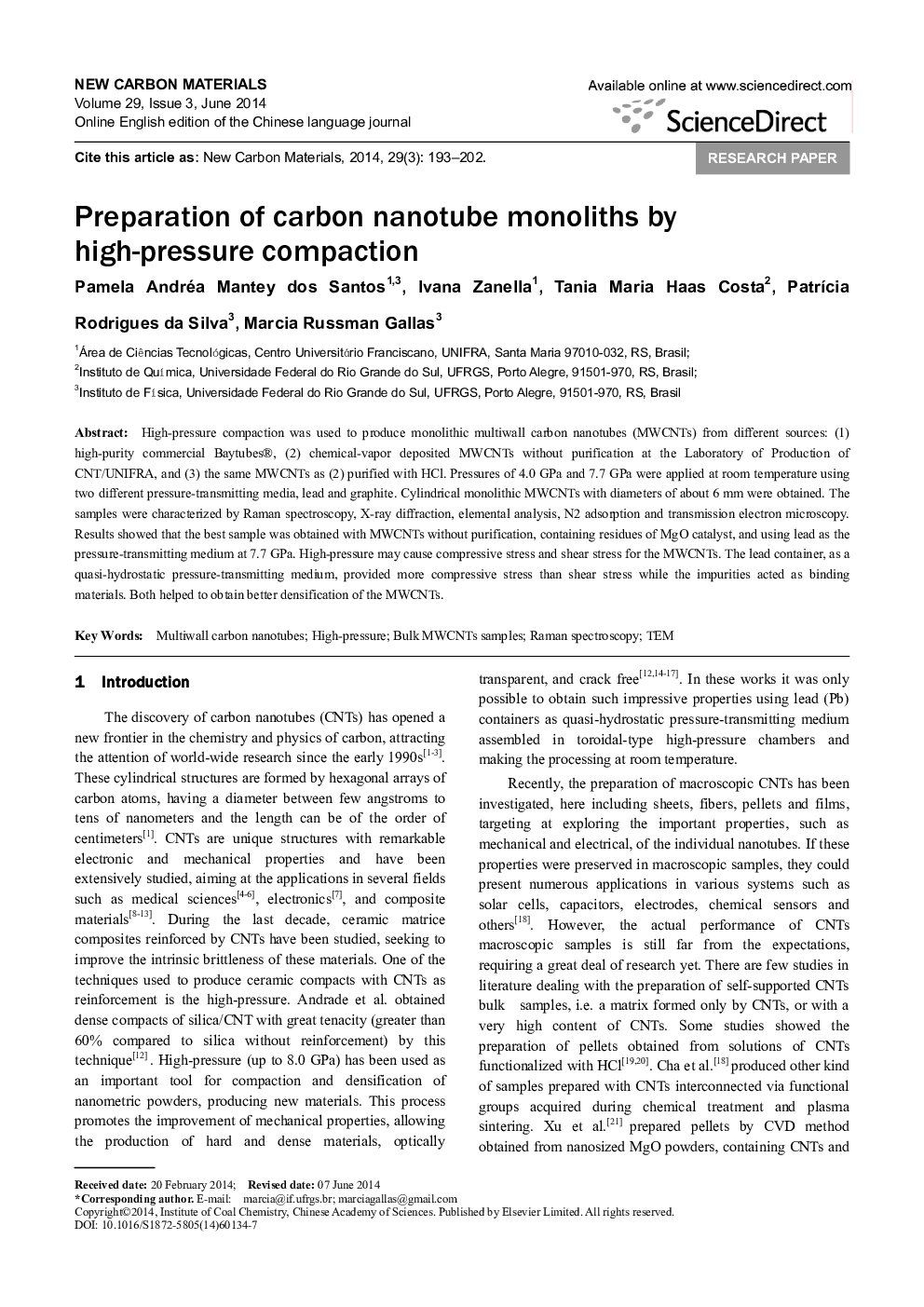| Article ID | Journal | Published Year | Pages | File Type |
|---|---|---|---|---|
| 1558441 | New Carbon Materials | 2014 | 10 Pages |
Abstract
High-pressure compaction was used to produce monolithic multiwall carbon nanotubes (MWCNTs) from different sources: (1) high-purity commercial Baytubes®, (2) chemical-vapor deposited MWCNTs without purification at the Laboratory of Production of CNT/UNIFRA, and (3) the same MWCNTs as (2) purified with HCl. Pressures of 4.0 GPa and 7.7 GPa were applied at room temperature using two different pressure-transmitting media, lead and graphite. Cylindrical monolithic MWCNTs with diameters of about 6 mm were obtained. The samples were characterized by Raman spectroscopy, X-ray diffraction, elemental analysis, N2 adsorption and transmission electron microscopy. Results showed that the best sample was obtained with MWCNTs without purification, containing residues of MgO catalyst, and using lead as the pressure-transmitting medium at 7.7 GPa. High-pressure may cause compressive stress and shear stress for the MWCNTs. The lead container, as a quasi-hydrostatic pressure-transmitting medium, provided more compressive stress than shear stress while the impurities acted as binding materials. Both helped to obtain better densification of the MWCNTs.
Related Topics
Physical Sciences and Engineering
Materials Science
Materials Chemistry
Authors
Pamela Andréa Mantey dos Santos, Ivana Zanella, Tania Maria Haas Costa, PatrÃcia Rodrigues da Silva, Marcia Russman Gallas,
